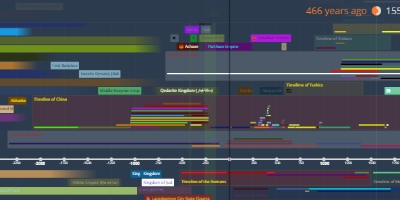Kingdom of Hungary (feb 29, 1920 – jan 31, 1946)
Description:
After the pullout of occupation forces of Romania in 1920 the country went into civil conflict, with Hungarian anti-communists and monarchists purging the nation of communists, leftists and others by whom they felt threatened. On 29 February 1920, after the pullout of the last of the Romanian occupation forces, the Kingdom of Hungary was restored, a coalition of right-wing political forces united and reinstated Hungary's status as a constitutional monarchy. Selection of the new King was delayed due to civil infighting, and a regent was appointed to represent the monarchy, former Austro-Hungarian navy admiral Miklós Horthy.The return of King Charles produced split parties between conservatives who favored a Habsburg restoration and nationalist right-wing radicals who supported election of a Hungarian king. Count István Bethlen, a non-affiliated right-wing member of the parliament, took advantage of this rift forming a new Party of Unity under his leadership. Horthy then appointed Bethlen prime minister. Charles IV died soon after he failed a second time to reclaim the throne in October 1921.
As prime minister, Bethlen dominated Hungarian politics between 1921 and 1931. He fashioned a political machine by amending the electoral law, providing jobs in the expanding bureaucracy to his supporters, and manipulating elections in rural areas. Bethlen restored order to the country by giving the radical counterrevolutionaries payoffs and government jobs in exchange for ceasing their campaign of terror against Jews and leftists. In 1921, he made a deal with the Social Democrats and trade unions (called Bethlen-Peyer Pact), agreeing, among other things, to legalize their activities and free political prisoners in return for their pledge to refrain from spreading anti-Hungarian propaganda, calling political strikes, and organizing the peasantry. Bethlen brought Hungary into the League of Nations in 1922 and out of international isolation by signing a treaty of friendship with Italy in 1927. The revision of the Treaty of Trianon rose to the top of Hungary's political agenda and the strategy employed by Bethlen consisted by strengthening the economy and building relations with stronger nations. Revision of the treaty had such a broad backing in Hungary that Bethlen used it, at least in part, to deflect criticism of his economic, social, and political policies.
On 15 March, Carpatho-Ukraine declared itself to be an independent state. Hungary rejected the independence of Carpatho-Ukraine and, between 14 March and 18 March, Hungarian armed forces occupied the rest of Carpathian Ruthenia and ousted the government of Avgustyn Voloshyn. By contrast, Hungary recognized the Nazi puppet state of Slovakia led by the Clerical Fascist Jozef Tiso.[51] In September 1940, with troops massing on both sides of the Hungarian-Romanian border, war was averted by the Second Vienna Award. This award transferred the northern half of Transylvania to Hungary, with a total area of 43,492 km2 and a total population of 2,578,100 with a 53.5% Hungarian majority according to the 1941 census. By dividing Transylvania between Romania and Hungary, Hitler was able to ease tensions in Hungary. In October 1940, the Germans initiated a reciprocity policy between Romania and Hungary which was continued until the end of World War II. The region of Sub-Carpathia was given special autonomous status with the intention that (eventually) it would be self-governed by the Ruthenian minority.
After being granted part of southern Czechoslovakia and Subcarpathia by the Germans and Italians in the First Vienna Award of 1938, and then northern Transylvania in the Second Vienna Award of 1940, Hungary participated in their first military maneuvers on the side of the Axis powers in 1941. Thus, the Hungarian army was part of the invasion of Yugoslavia, gaining some more territory and joining the Axis powers in the process.
On 22 June 1941, Germany invaded the Soviet Union in Operation Barbarossa. Hungary joined the German effort and declared war on the Soviet Union on 26 June, and entered World War II on the side of the Axis. In late 1941, the Hungarian troops on the Eastern Front experienced success at the Battle of Uman. By 1943, after the Hungarian Second Army suffered extremely heavy losses at the river Don, the Hungarian government sought to negotiate a surrender with the Allies.
On 19 March 1944, as a result of this duplicity, German troops occupied Hungary in what was known as Operation Margarethe. By then it was clear that Hungarian politics would be suppressed according to Hitler's intention to hold the country in the war on the side of the Nazi Third Reich because of its strategic location. On 15 October 1944, Horthy made a token effort to disengage Hungary from the war. The Germans launched Operation Panzerfaust and Horthy's regime was replaced by a fascist puppet government under the pro-German Arrow Cross leader Ferenc Szálasi, thus effectively ending the possibility for independent actions in the war. However, the form of government was only changed to a republic two years later.
Added to timeline:
Date:
feb 29, 1920
jan 31, 1946
~ 25 years
